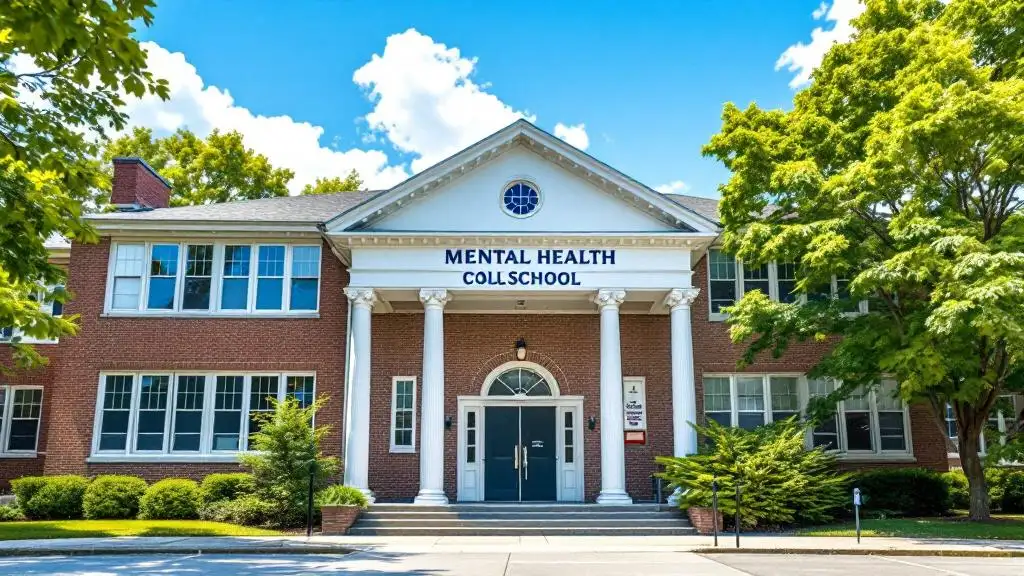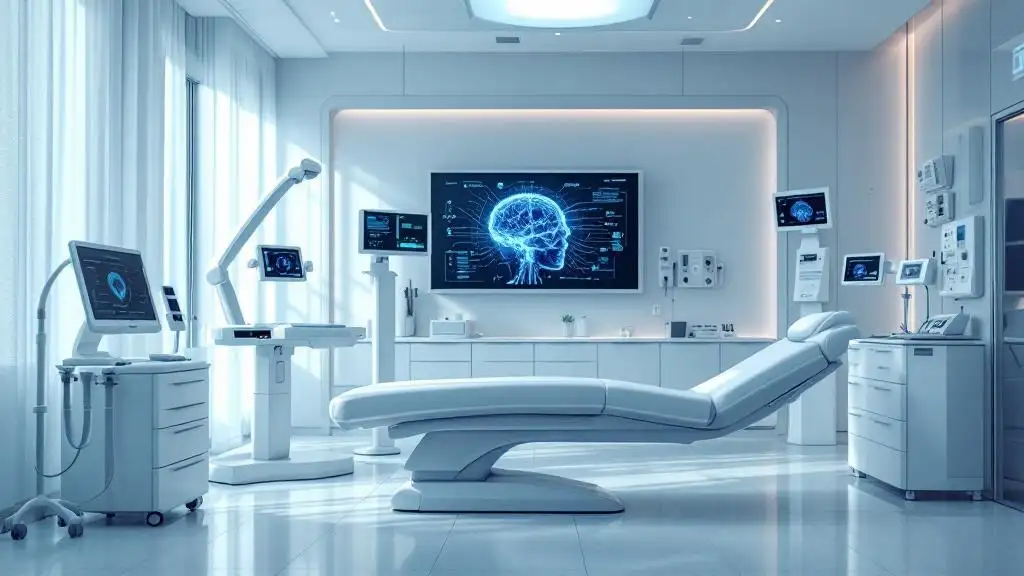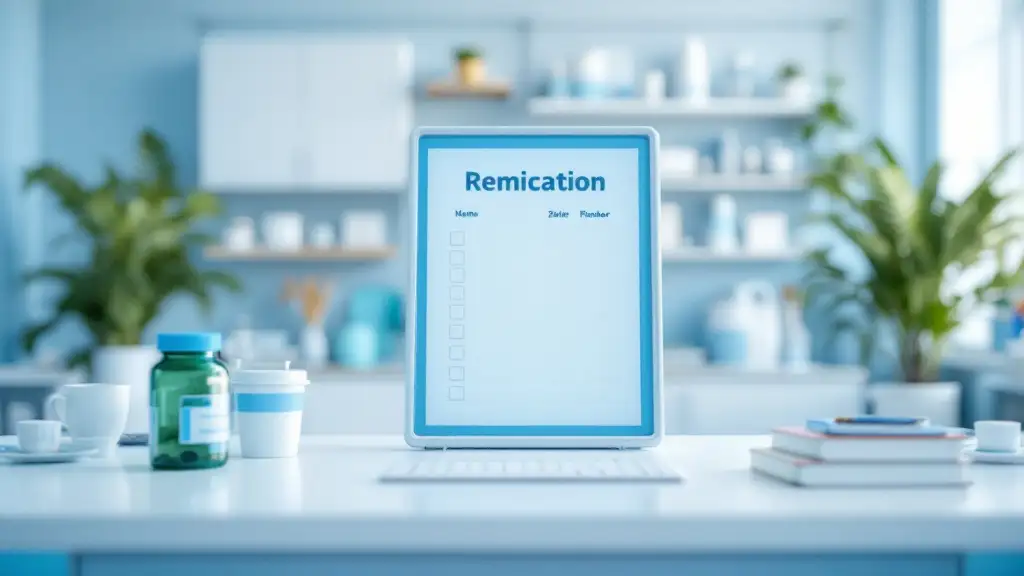Understanding ADHD and the Role of Neuropsychology in Focus Improvement
Attention Deficit Hyperactivity Disorder (ADHD) affects a significant portion of the population across all ages, manifesting as symptoms like distractibility, impulsivity, and hyperactivity. Neuropsychological mechanisms underlying these symptoms include deficits in attention regulation, executive functioning, and motivation, often linked to neurobiological dysregulation in dopaminergic and prefrontal pathways. Advances in neuroassessment and targeted interventions have expanded options for managing ADHD, emphasizing the importance of comprehensive approaches that enhance neural functioning and support adaptive behaviors.
Neuropsychological Assessment and Its Role in ADHD Management
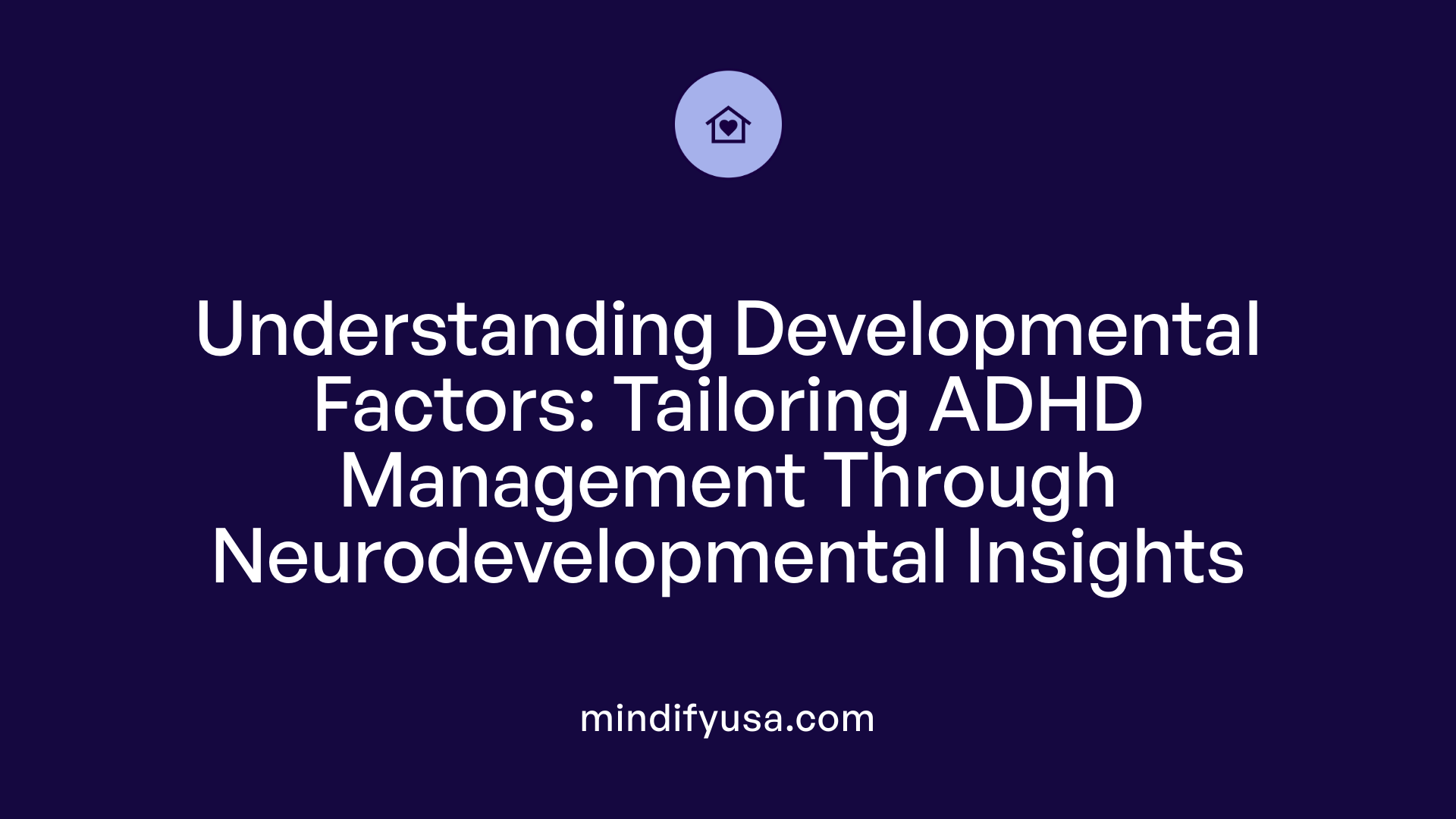
How can neuropsychological testing help in diagnosing and understanding ADHD?
Neuropsychological testing is instrumental in diagnosing and understanding ADHD because it offers a detailed picture of an individual's cognitive profile. These assessments reveal specific strengths and weaknesses across various domains such as attention, working memory, impulse control, and organizational skills. Common tools used include the Test of Variables of Attention (TOVA), Stroop Test, and WISC (Wechsler Intelligence Scale for Children). These standardized tests provide objective data that help clinicians differentiate ADHD from other conditions with overlapping symptoms, like anxiety or learning disabilities.
By pinpointing cognitive deficits, neuropsychological testing guides personalized intervention strategies. For example, if a child demonstrates significant difficulties with inhibitory control, targeted behavioral or cognitive training can be recommended. The assessment results also assist in planning accommodations for school or work, and in tracking intervention progress over time. Overall, this approach ensures that management strategies are tailored to the individual’s unique neural and cognitive profile, improving outcomes.
Does neuropsychological testing need to be conducted by a specialist?
Yes, neuropsychological testing is best conducted by qualified professionals, such as licensed neuropsychologists. These specialists are trained to administer a wide array of standardized tests accurately and interpret the results within the context of clinical observations and patient history. Their expertise ensures that subtle cognitive differences are correctly identified, and that the assessment is both valid and reliable.
While behavioral questionnaires and clinical interviews are useful, comprehensive testing provides a much more detailed assessment of cognitive functioning. This depth of analysis is especially critical in complex cases involving comorbid conditions, or when formal documentation is needed for academic, legal, or employment accommodations.
Having an expert conduct and interpret the assessments leads to more precise diagnoses and ensures that interventions are based on accurate information. Consequently, neuropsychologists play a crucial role in the multidisciplinary approach needed for effective ADHD management.
What neurodevelopmental factors influence ADHD management?
Neurodevelopmental factors are central to understanding and managing ADHD. The disorder arises from structural and functional differences in the brain, particularly within networks involved in executive functions, attention regulation, and impulse control. Variations in the development of the prefrontal cortex, basal ganglia, cerebellum, and limbic system contribute to the diverse presentation of ADHD symptoms.
Research shows that early brain development trajectories influence how ADHD manifests and responds to treatment. For example, delayed maturation of certain brain regions can account for challenges with attention and self-regulation that persist into adulthood.
Recognizing neurodevelopmental influences allows clinicians to tailor interventions appropriately. Early diagnosis and intervention can alter developmental trajectories, reducing long-term impairments. Knowledge about genetic vulnerabilities and environmental factors, such as prenatal exposure to toxins or stress, further helps in designing comprehensive treatment plans.
Integrating neurodevelopmental insights ensures that therapies address core biological aspects of ADHD, supporting better behavioral, cognitive, and emotional outcomes across the lifespan.
| Aspect | Details | Additional Notes |
|---|---|---|
| Assessment Tools | TOVA, Stroop Test, WISC, WCST, NEPSY-2, N-Back Test | Objective measures for cognitive profiling |
| Diagnosis Aid | Differentiates ADHD from similar conditions | Helps in personalized intervention planning |
| Intervention Planning | Targeted cognitive, behavioral, and neurofeedback therapies | Based on individual neuropsychological profile |
| Neurodevelopmental Factors | Brain structure, maturation, genetics | Influence symptom severity and treatment response |
| Importance of Specialists | Trained neuropsychologists for administering tests | Ensures accurate diagnosis and interpretation |
| Early Intervention | Critical for better long-term outcomes | Based on developmental insights |
This comprehensive approach, combining detailed assessments and understanding neurodevelopment, enhances the overall management of ADHD. Tailoring interventions to individual neuropsychological profiles allows for more effective treatment and improved quality of life for individuals across all ages.
Neuropsychological Interventions and Their Effectiveness
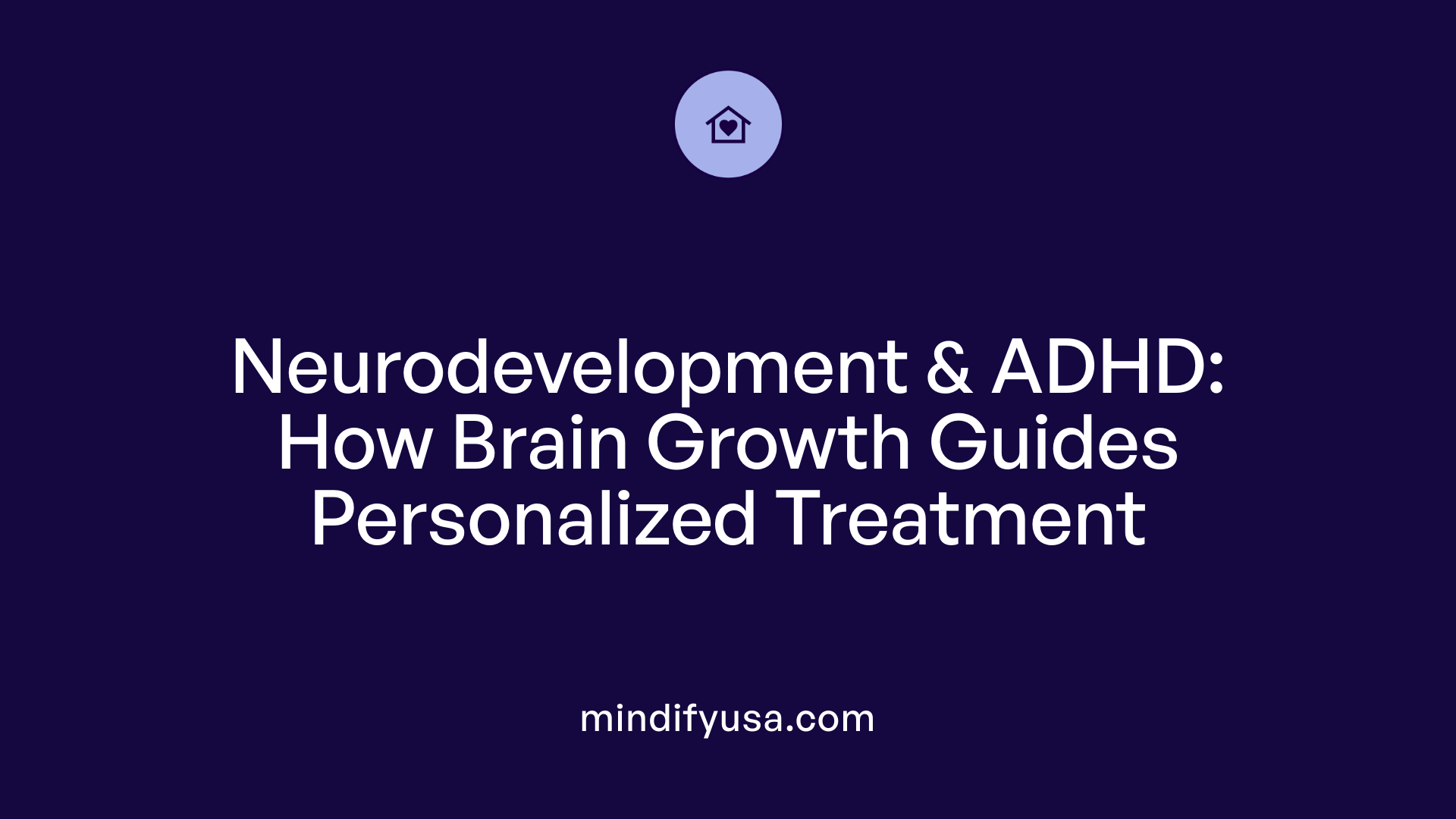
What are effective neuropsychological interventions for improving focus in individuals with ADHD?
Several approaches have been developed to enhance attention and executive functions in individuals with ADHD. Cognitive training, such as targeted programs for working memory, inhibition control, and attention, aims at strengthening the neural networks involved in these processes. Both ADHD-specific cognitive training (AET) and general executive function training (GET) have demonstrated significant improvements in ADHD symptoms and in measures of executive performance. Interestingly, studies suggest that children with less severe symptoms (baseline ADHD-RS scores ≤ 28) tend to benefit more from targeted cognitive interventions.
Neurofeedback, especially real-time fMRI (rtfMRI-NF), offers a method for individuals to learn how to regulate their brain activity. Although this approach shows promise, research results vary, and further studies are needed to confirm its long-term effectiveness.
Physical exercise, particularly aerobic activities like running or cycling, has accumulated consistent evidence of beneficial effects. Regular physical activity supports neuroplasticity and can lead to small to moderate gains in attention and executive functioning. The neurophysiological benefits include enhanced neural growth and connectivity.
Other strategies include mindfulness meditation, which has shown positive effects on selective attention, and non-invasive brain stimulation techniques like transcranial direct current stimulation (tDCS) and transcranial magnetic stimulation (TMS). While findings are still emerging, these methods have potential as adjunctive treatments. Behavioral therapies, notably cognitive-behavioral therapy (CBT), provide skills for self-regulation, organization, and emotional management, often improving overall functioning.
Together, these interventions supplement medication and play a role in comprehensive ADHD management plans, especially when personalized to an individual’s neurophysiological profile.
How does neurodevelopment influence ADHD management?
Neurodevelopment shapes how ADHD manifests and responds to treatment across the lifespan. Both the structural and functional abnormalities in the brain—particularly within fronto-striato-parieto-cerebellar circuits—underpin core symptoms like inattention, impulsivity, and hyperactivity.
Understanding that ADHD results from atypical brain development emphasizes the importance of early intervention. Early diagnosis and targeted therapy during critical developmental windows can potentially alter the trajectory of the disorder, reducing long-term adverse consequences.
Research indicates that neurodevelopmental considerations guide personalized treatment strategies. For example, knowing a person's baseline neurocognitive profile can inform the choice of specific interventions, whether cognitive training, behavioral modifications, or brain stimulation techniques.
Importantly, environmental influences, including enriched experiences and physical activity, synergize with neurodevelopmental factors to promote neural growth. During childhood and adolescence, the brain's plasticity allows for modifications through behavioral and neuropsychological interventions, ultimately improving outcomes.
Thus, a comprehensive understanding of neurodevelopmental aspects not only informs the timing and type of treatment but also enhances the likelihood of lasting improvements in cognitive functioning and behavioral regulation.
Early Interventions in Childhood with Long-Term Benefits
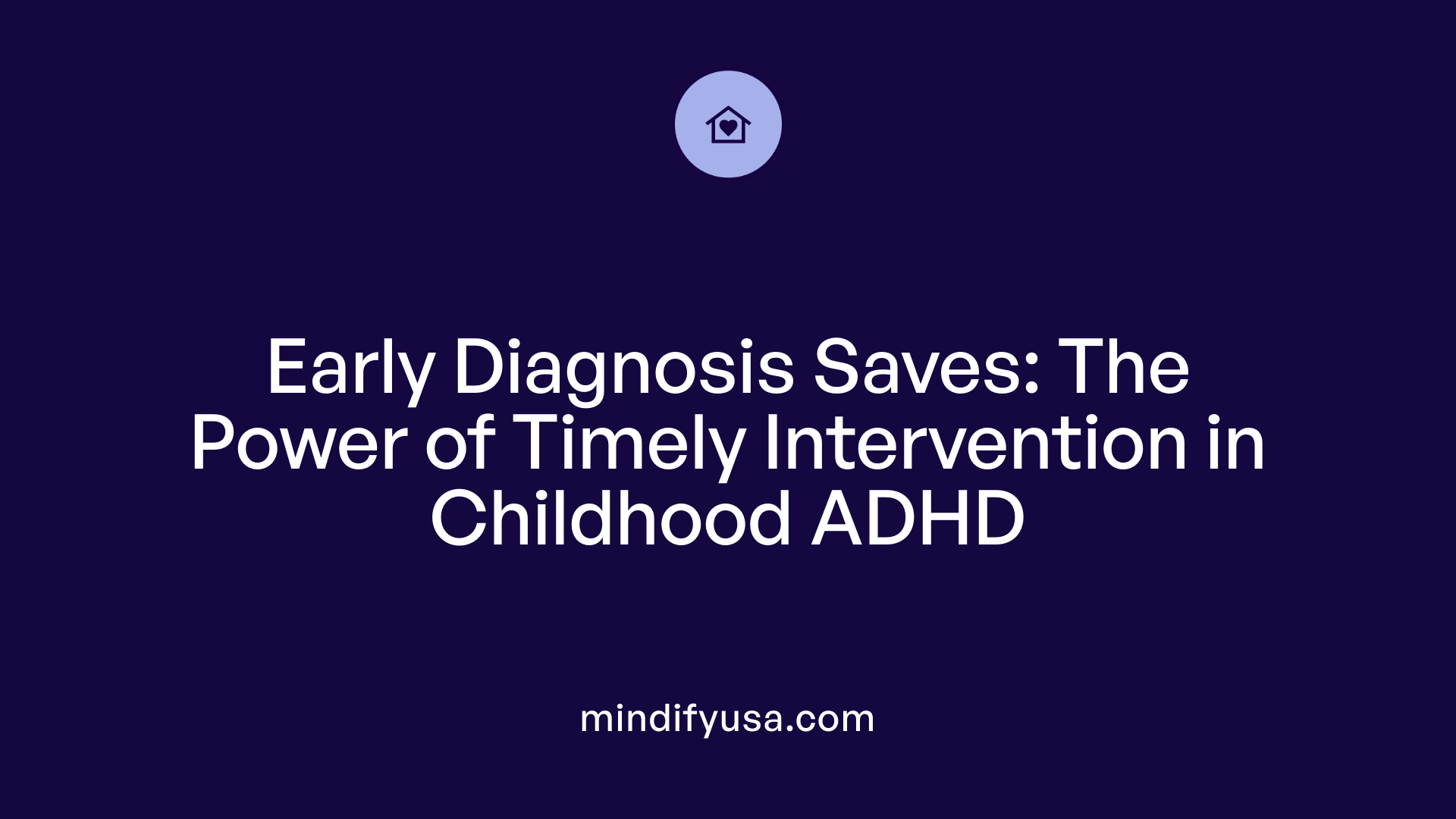
Why is early diagnosis of ADHD important?
Early identification of ADHD in preschool children is crucial because it allows for timely intervention during a period when the brain is highly plastic and responsive to therapeutic strategies. Diagnosing ADHD early helps in implementing support systems that can modify developmental trajectories before maladaptive patterns become ingrained. This proactive approach can reduce the severity of symptoms and improve academic, social, and emotional outcomes.
Can early intervention prevent long-term adverse effects?
Research indicates that targeted early interventions can significantly prevent or mitigate long-term adverse consequences of ADHD. Programs that promote neurocognitive development, such as behavioral therapy, cognitive training, and environmental enrichment, have demonstrated promising results. These interventions aid in strengthening executive functions, improving attention, and reducing hyperactivity, all of which support better functioning into adolescence and adulthood.
How does neuroplasticity affect the timing of interventions?
The concept of neuroplasticity, the brain's ability to reorganize itself by forming new neural connections, underscores the importance of timing in interventions. During early childhood, the brain is especially malleable, and stimulation through appropriate activities can lead to meaningful changes in brain structure and function. Intervening during this critical period can optimize developmental trajectories, potentially reducing the severity and persistence of ADHD symptoms.
| Aspect | Significance | Supporting Evidence |
|---|---|---|
| Early diagnosis | Enables prompt support | Can prevent escalation of symptoms |
| Prevention of long-term effects | Enhances social and academic outcomes | Early behavioral and cognitive interventions show lasting benefits |
| Neuroplasticity | Foundation for targeted growth | Brain adaptability in early childhood allows for effective intervention |
| Intervention strategies | Strengthen neural pathways | Cognitive training, physical activity, environment enrichment |
| Developmental windows | Critical periods | Maximize benefits of therapeutic activities |
| Long-term benefits | Improved quality of life | Reduced symptom severity, better emotional regulation |
What strategies can help improve focus without medication?
Improving focus without medication involves various behavioral and environmental strategies. Engaging in mindfulness practices such as meditation, yoga, and tai chi has been shown to reduce ADHD symptoms by enhancing attention and emotional regulation. Spending at least 20 minutes outdoors in natural environments can boost concentration and calm hyperactivity. Regular physical activity, including walking, swimming, or participating in team sports, increases dopamine and serotonin levels, supporting sustained attention. Establishing a consistent daily routine with designated times for work, meals, and rest minimizes overwhelm and helps maintain focus. Creating a clutter-free, organized environment, limiting distractions, and practicing behavioral therapies further bolster attentional control. Ensuring adequate sleep hygiene and balanced nutrition also play essential roles in managing symptoms.
What neurodevelopmental factors influence ADHD management?
Neurodevelopmental factors critically shape ADHD management strategies. Variations in brain growth, structure, and connectivity influence how symptoms manifest and respond to treatments. Recognizing that ADHD involves abnormalities in brain regions responsible for executive functions, such as the prefrontal cortex, helps tailor personalized interventions. Early diagnosis exploits the brain's plasticity, allowing for effective neurocognitive training and behavioral interventions during sensitive developmental periods. Additionally, understanding genetic predispositions and environmental influences—such as prenatal exposures or early life stressors—enables clinicians to create comprehensive, individualized treatment plans. This approach optimizes the likelihood of achieving meaningful long-term improvements in attention, impulse control, and emotional regulation.
Environmental and Behavioral Techniques for Focus Enhancement
What role do environmental modifications and behavioral techniques play in improving focus?
For individuals with ADHD, creating an environment conducive to concentration is essential. Modifications such as decluttering spaces and reducing noise levels help minimize distractions that can impair focus. Using noise-canceling headphones or setting up quiet zones can make a significant difference.
Behavioral strategies further support focus by teaching self-regulation and organizational skills. Techniques like positive reinforcement reward goal-directed behavior, motivating individuals to stay attentive. Clear instructions and visual aids, such as charts or checklists, provide structure and help in understanding expectations.
In educational settings, teachers trained in behavioral management can implement routines that foster consistency. Parent training programs also equip families with tools to reinforce positive behaviors at home, ensuring continuity across environments.
While these strategies do not eliminate core ADHD symptoms, they address functional challenges effectively. When combined with medical or other therapeutic interventions, environmental and behavioral modifications enhance overall daily functioning, attention span, and engagement.
What neuropsychological strategies can support children and adolescents with ADHD?
Supporting young individuals with ADHD involves various neuropsychological approaches. Behavioral interventions include parent training and classroom-based techniques that promote positive reinforcement, consistent routines, and organizational skills.
Cognitive training exercises play a critical role by targeting executive functions such as working memory, inhibition control, and sustained attention. Computer-based programs or goal management training help strengthen these skills, making daily tasks more manageable.
Environmental adjustments like visual schedules, timers, and designated quiet zones help children develop better attention regulation. Sensory integration techniques and occupational therapy address sensory sensitivities, improving self-control and reducing overstimulation.
Creating calming spaces equipped with sensory tools fosters emotional regulation and focus. Structured reward systems motivate children to complete tasks and adhere to routines, reinforcing desired behaviors.
These strategies aim not only to improve attention but also to develop self-regulation, behavior management, and academic success. Ultimately, combining behavioral, cognitive, and environmental techniques provides a comprehensive approach to managing ADHD effectively.
The Impact of Digital Tools and AI on ADHD Management
How effective are digital tools and AI in neuropsychological strategies for ADHD?
Digital technology and artificial intelligence (AI) are transforming how we approach ADHD management. These tools provide personalized support that targets core neuropsychological challenges such as organization, time management, and focus. AI-powered applications can assist users in setting reminders, breaking tasks into smaller, manageable steps, and prioritizing activities effectively through intelligent algorithms. This level of personalization supports executive functions, which are often impaired in ADHD.
Virtual assistants and specialized apps also play a significant role in promoting daily routines. They reduce distractions by offering structured prompts and emotional support, which can improve overall symptom control. Some AI solutions are integrated into clinical settings, helping healthcare professionals improve diagnosis accuracy and develop tailored treatment plans based on detailed behavioral data.
While these digital tools show promising results, it remains crucial to verify that the AI-generated information is accurate and individualized. As research advances, the integration of these technologies is likely to become more sophisticated, offering clinicians and individuals with ADHD powerful new means for symptom management.
Focus Strategies for Adults with ADHD
Practical routines and organizational tools
For adults managing ADHD, implementing structured routines is essential. Establishing consistent daily schedules helps reduce chaos and increases predictability, which can improve focus and task completion. Utilizing organizational tools such as digital calendars, reminders, to-do lists, and timers keeps tasks manageable and prevents mental clutter.
Creating visual aids like charts, checklists, and color-coded planners supports memory and enhances organization. Breaking larger projects into smaller, achievable steps with set deadlines decreases overwhelm and boosts motivation.
Designating specific, clutter-free spaces for work and relaxation minimizes distractions. Using noise-canceling headphones and tidy environments can significantly improve concentration during work or study sessions.
Mindfulness, exercise, and healthy habits
Regular physical activity, including aerobic exercises like walking, cycling, or swimming, plays a crucial role in stabilizing dopamine levels and improving focus. Mindfulness practices such as meditation, deep breathing, and sensory awareness exercises can enhance attention span and emotional regulation.
A balanced diet rich in proteins, omega-3 fatty acids, and complex carbohydrates supports optimal brain function and energy levels. Adequate sleep hygiene, including consistent bedtimes and minimizing screen time before sleep, is vital for focus and emotional stability.
Engaging in activities that promote relaxation and stress reduction, such as yoga or relaxation techniques, can help manage impulsivity and anxiety.
Goal setting and self-regulation techniques
Effective goal setting involves breaking tasks into small, specific, and achievable goals, then rewarding progress to increase motivation. Using visual timers and setting structured routines promote self-regulation by providing clear timeframes and expectations.
Self-monitoring strategies, like journal tracking or app-based progress logs, help individuals recognize patterns and adjust their behaviors accordingly. Techniques like 'Pomodoro' intervals—focused work periods followed by short breaks—optimize attention spans.
Encouraging self-awareness and recognizing early signs of distraction allow for timely re-engagement with tasks. Developing habits such as regular exercise, mindfulness, and organizing workspaces contribute to long-term self-regulation.
By combining these routines, tools, and techniques, adults with ADHD can improve their ability to focus, manage impulses, and accomplish their personal and professional goals more effectively.
| Strategy | Application Example | Benefit |
|---|---|---|
| Structured routines | Daily schedule with set wake-up, work, and rest times | Consistency reduces distractibility |
| Organizational tools | Reminder apps, checklists, visual planners | Enhances memory and task management |
| Mindfulness and exercise | Meditation sessions, aerobic workouts | Improves focus, reduces stress |
| Goal setting | Breaking tasks into small steps, using timers for focus sessions | Increases motivation and facilitates task completion |
| Self-monitoring | Keeping a journal or using apps to track behavior | Promotes self-awareness and adaptive strategies |
Continuous practice of these techniques can significantly contribute to better attention control and overall functioning for adults living with ADHD.
Neurocognitive Models Explaining Attentional Control in ADHD
What neurocognitive models explain attentional control difficulties in ADHD?
Neurocognitive models of ADHD mainly focus on deficits in the brain's ability to regulate attention, working memory, and response inhibition. These models help explain why individuals with ADHD often struggle with maintaining focus, controlling impulses, and managing cognitive effort.
One prominent framework is the dual pathway model. This model proposes that ADHD symptoms arise from two separate but overlapping issues: attentional control deficits and motivational deficits. The attentional pathway involves impairments in executive functions that regulate focus and cognitive flexibility. The motivational pathway suggests that reduced sensitivity to reward and altered dopaminergic function contribute to decreased motivation and increased distractibility.
Another influential model is the cognitive-energetic model. It emphasizes the role of fluctuating alertness, effort, and arousal in attention regulation. According to this model, variations in mental energy and effort influence the capacity to sustain attention, explaining why individuals with ADHD may experience periods of hyperfocus or inattentiveness.
Recent neurophysiological research has shed light on the brain networks involved in attentional control. Atypical activity in frontoparietal networks, which include regions like the dorsolateral prefrontal cortex (DLPFC), and in cingulo-striatal circuits, contributes significantly to ADHD symptoms. These networks are associated with goal-directed attention, executive functioning, and response selection.
Dysfunctions in these neural pathways are often observed through neuroimaging and electrophysiological studies. For instance, individuals with ADHD frequently show abnormal activation patterns, such as decreased P3 component amplitudes during oddball tasks, indicating impaired attentional resource allocation. Additionally, brain maturation delays, particularly in prefrontal and parietal cortices, are linked to persistent attentional challenges.
Furthermore, studies highlight a failure to adequately deactivate the default mode network (DMN) during task performance. The DMN is active during rest and mind-wandering but should suppress during goal-oriented tasks. In ADHD, insufficient suppression of the DMN correlates with increased distractibility and lapses in attention.
These models, supported by neurophysiological findings, illustrate that attentional difficulties in ADHD are rooted in complex interactions between impaired brain networks, neurotransmitter dysregulation (notably dopamine), and individual differences in cognitive capacity. Such insights underscore the importance of targeted neuropsychological and pharmacological interventions, aiming to improve neural functioning in these critical circuits.
| Model/Neurophysiological Aspect | Description | Implication for ADHD |
|---|---|---|
| Dual Pathway Model | Separates attentional and motivational deficits | Explains variability in symptoms and response to treatment |
| Cognitive-Energetic Model | Focuses on arousal and effort regulation | Underpins interventions boosting alertness |
| Frontoparietal Network Function | Brain regions involved in goal-directed attention | Targeted via neurofeedback and cognitive training |
| Default Mode Network Dysfunction | Lack of suppression during tasks | Associated with distractibility and task lapses |
| Neurophysiological Measures | ERP components, cortical maturation | Used for diagnosis and monitoring treatment effects |
These models collectively deepen our understanding of the neurobiological underpinnings of attention regulation issues in ADHD, fostering better diagnosis and the development of more effective interventions.
Integrating Neuropsychological Strategies for Effective ADHD Management
The landscape of ADHD management is increasingly embracing neuropsychological strategies that target core cognitive and neurobiological deficits. Through comprehensive assessments, personalized interventions—including cognitive training, neurofeedback, and environmental modifications—coupled with lifestyle factors such as physical activity and mindfulness, individuals of all ages can experience improved focus and functioning. The integration of digital tools and artificial intelligence further enhances these approaches, offering tailored support and real-time feedback. As ongoing research elucidates the neurodevelopmental and neurocognitive underpinnings of ADHD, the promise of precise, evidence-based strategies moves closer to becoming standard practice, fostering better outcomes and quality of life for those affected.
References
- ADHD and Neuropsychology: Developmental Perspective ...
- Preventive Interventions for ADHD: A Neurodevelopmental ...
- Improvement of anxiety in ADHD following goal-focused cognitive ...
- 9 Ways to Focus With ADHD - ADDA
- ADHD Focus Strategies: 7 Empowering Insights - Skill Point Therapy
- Ditch the Distraction: 7 Ways to Focus When You're Living With ADHD
- Popular interventions to enhance sustained attention in children and ...
- How to Stay Focused with Adult ADHD | Memorial Hermann
- Computer-based multiple component cognitive training in children ...












